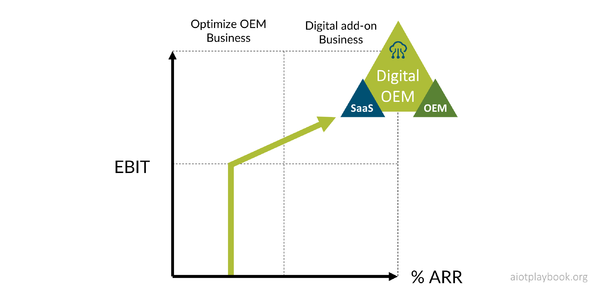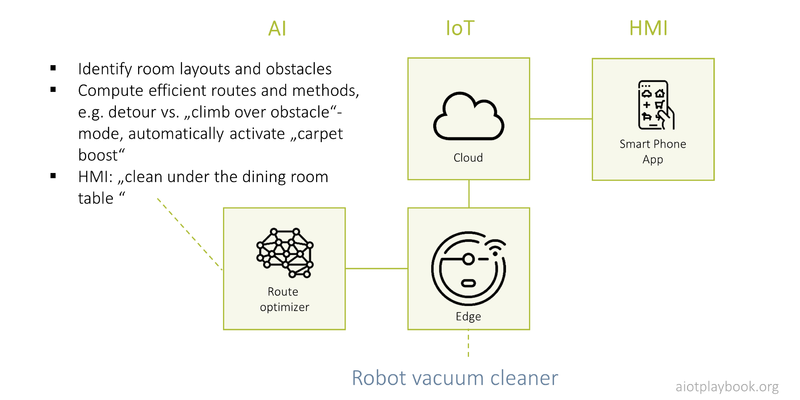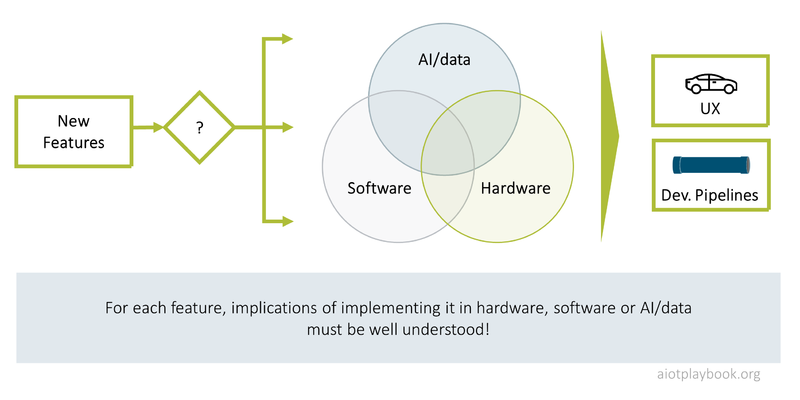
The Digital OEM
The Digital OEM combines physical product design, engineering and manufacturing with Software-as-a-Service in order to provide smart, connected products. Artificial Intelligence (AI) and Internet of Things (IoT) are the two key enablers. Taken together, AI and IoT form the Artificial Intelligence of Things (AIoT). The AIoT Framework provides actionable tools and best practices for implementing AIoT.
WHY
The motivation for adopting a digital OEM business model can vary widely. Many incumbent OEMs are seeking ways to build upon their existing business. New market entrants are looking at disruptive new business models enabled by the combination of physical products with AIoT.
While AI and IoT are exciting technical enablers, anybody embarking on the AIoT journey should always start by looking at the "why": What is the purpose? And what are the expected business outcomes? From a strategic (and emotional) point of view, the purpose of the AIoT initiative should be clearly articulated: What is the belief? The mission? Why is this really done?
Digital OEMs - business models
At the core of the digital OEM business model is the physical asset or product. The interesting question is, which new opportunities are arising through the combination of physical products with digital solutions. Examples include:
- Data-driven business, e.g. building on user-generated data or asset/product performance-related data. Examples include usage based car insurance (UBI), data-driven aftermarket services, or drone-based building facade inspection.
- Digital add-on services, e.g. an optional autopilot service for an electric vehicle, or cooking recipe add-ons for a smart kitchen appliance
- Asset-as-a-Service, e.g. car-seat-heating-as-a-service, or the famous "power-by-the-hour" for Rolls-Royce aircraft engines
- Smart Maintenance, including predictive, preventive and prescriptive maintenance, enabled by deep analytics of asset/machine data via AIoT
Incumbent OEMs - business improvements
Especially for incumbent OEMs, the idea of improving existing business by adding digitally-enabled solutions is attractive. Generating ARR (Annual Recurring Revenue) via digital services is very attractive, since ARR is seen as a more stable and predictable revenue stream. However, the opportunity to improve existing business - and especially EBIT - with digital solutions as a short-term measure should not be underestimated, since unproven, new business models can have inherent risks and realization of new, ARR-like revenues might take longer than hoped for.
WHAT
What can be done with AIoT from the perspective of the digital OEM? Usually, the answer is building smart, connected products. These combine physical products with smartness enabled by AI and connectivity enabled by IoT. To build smart, connected products, the digital OEM needs to combine product engineering and manufacturing capabilities with edge and cloud software development capabilities.
Smart, connected products - enabled by AIoT
Smart, connected products usually combine edge and cloud computing capabilities: Edge computing is anything that happens on (or near) the asset/product in the field. Edge computing capabilities are usually dedicated to a single asset/product, or sometimes a specific cluster of assets/products operating in close proximity. Cloud computing in an AIoT scenario on the other hand can enable insights or functionality which relates to an entire fleet (or "swarm") of assets/products. Consequently, in AIoT we also differentiate between two types of intelligence: asset/product intelligence, vs swarm intelligence.
Example: Robot vacuum cleaner
A good example for a smart, connected product is a robot vacuum cleaner. These products use AI to identify room layouts and obstacles, and to compute efficient routes and methods. For example, the robot can decide to make a detour vs. switching into the build-in „climb over obstacle“-mode. Another example is the automatic activation of a „carpet boost“ mode. IoT-connectivity to the cloud enables integration with user interface technology such as smart mobile devices or smart home appliances for voice control („clean under the dining room table“).
Example: Kitchen Appliance
Example: Automatic wiper control
Example: Physical product design improvements
Example: Smart tightening tool
WHY revisited
Aligning the Product Lifecycle with the Customer Journey
Benefits
HOW
Key design decisions
Technical constraints
Considerations for execution and delivery













